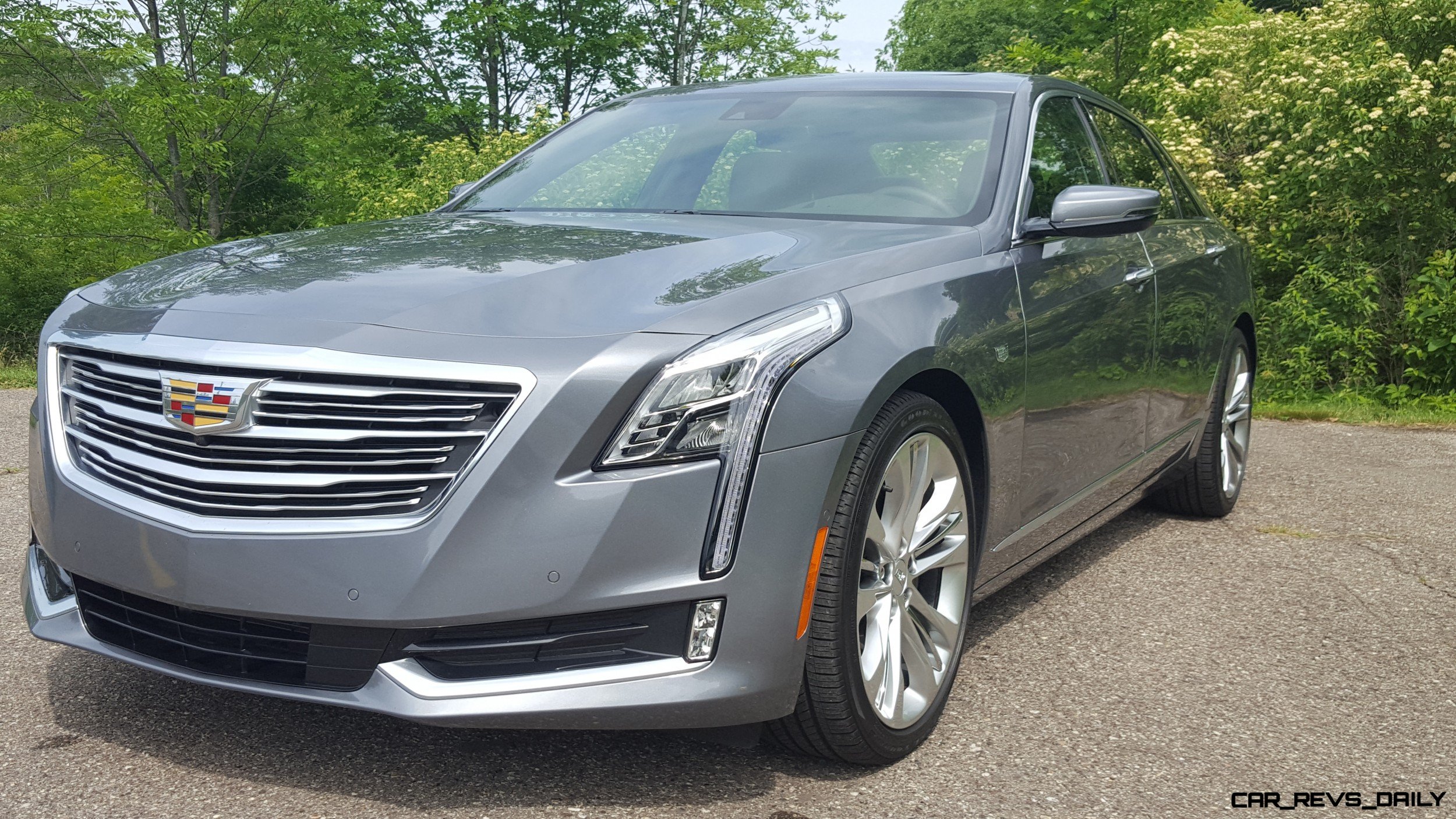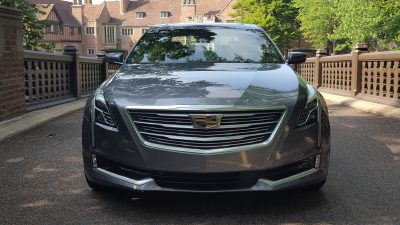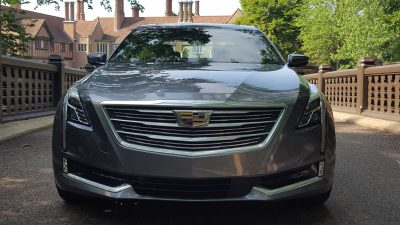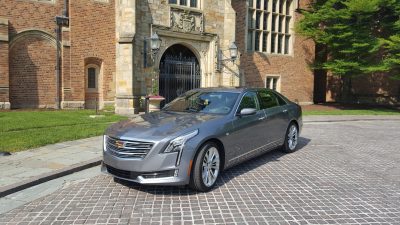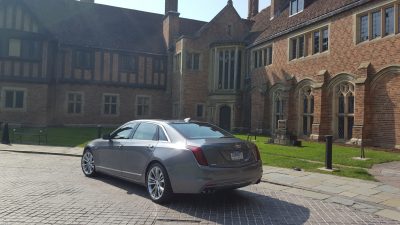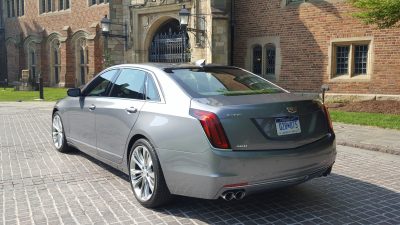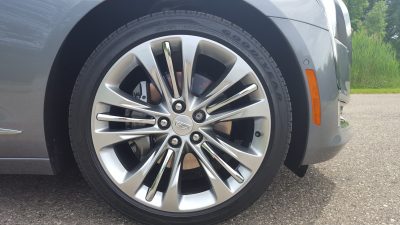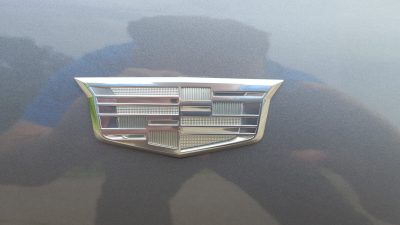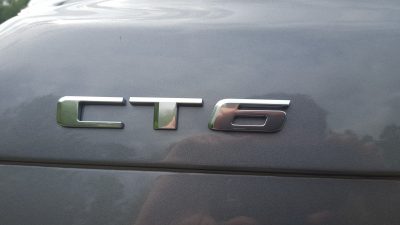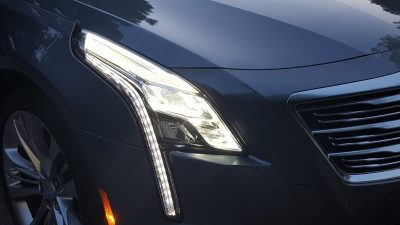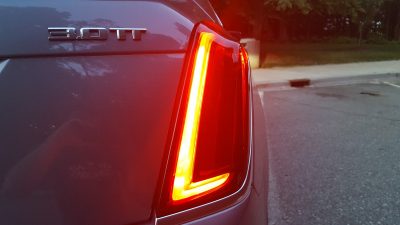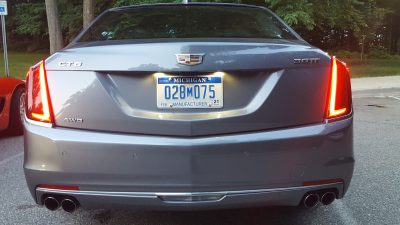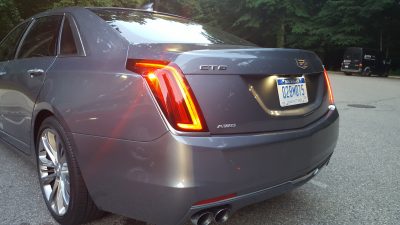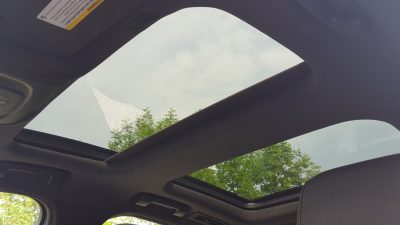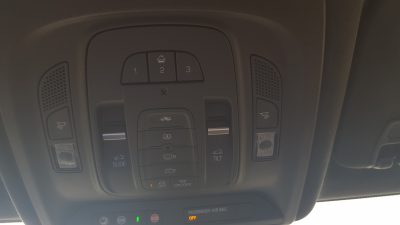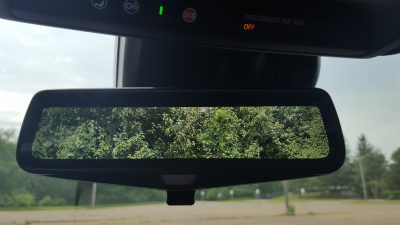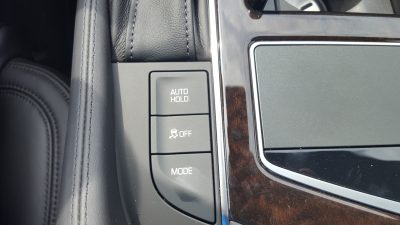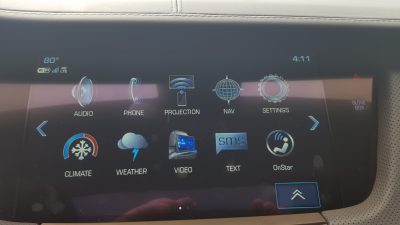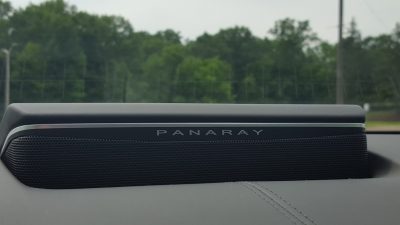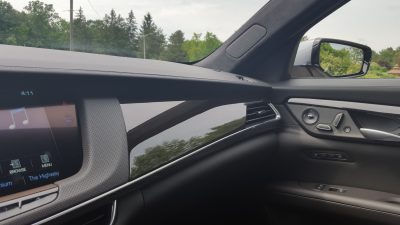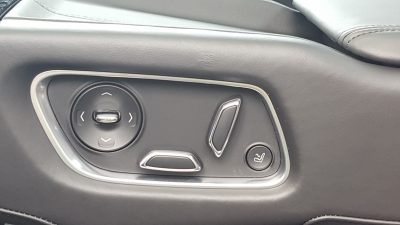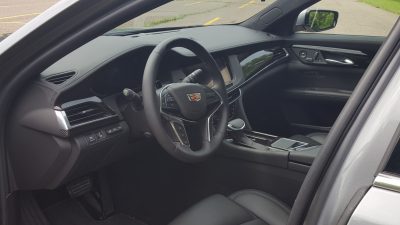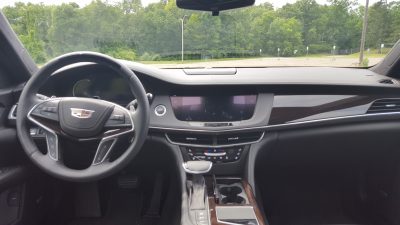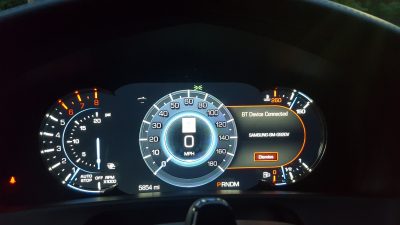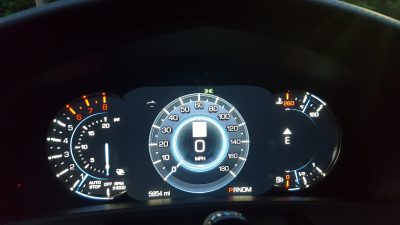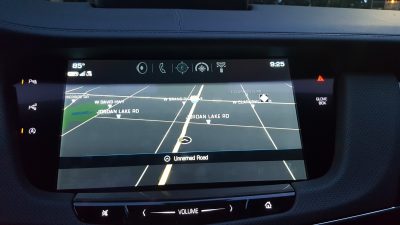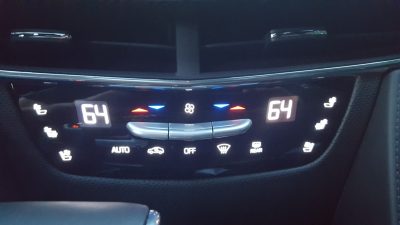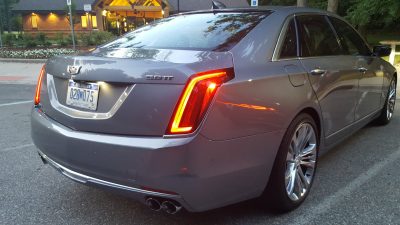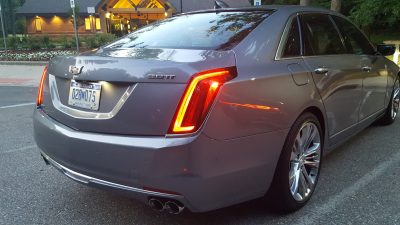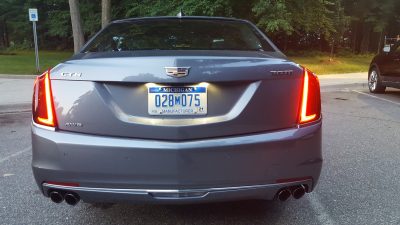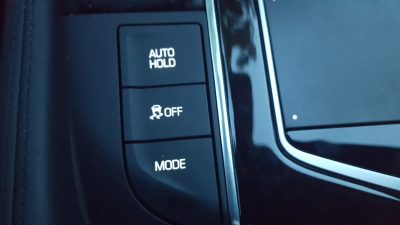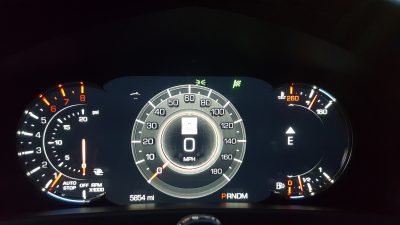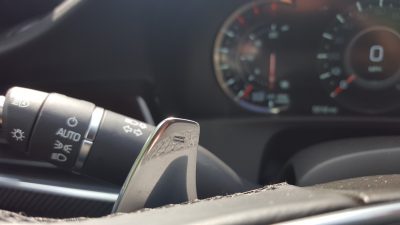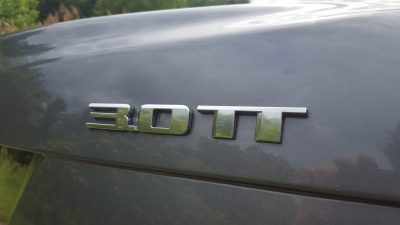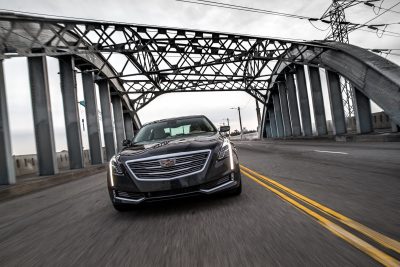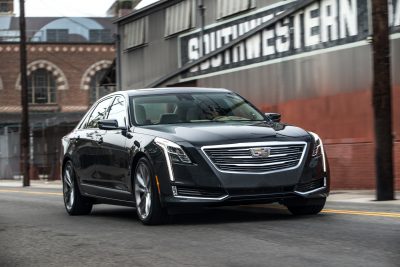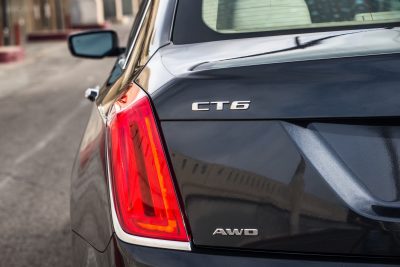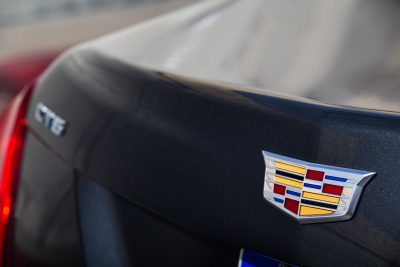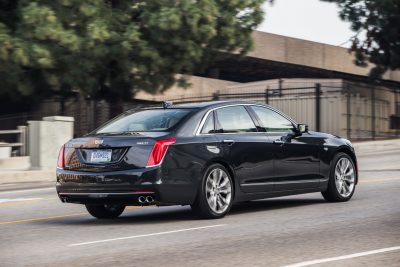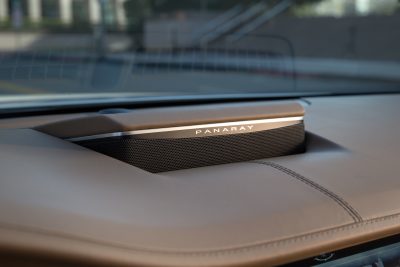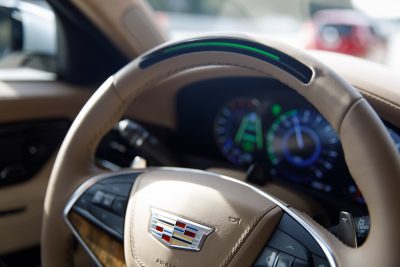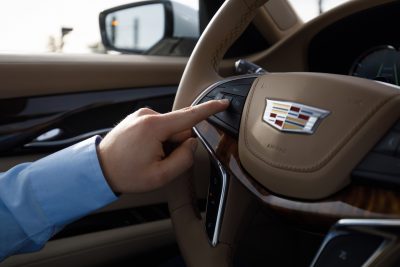When we first started this comparison series, three flagship luxury sedans entered the fray, but ultimately, only one emerged with the coveted first place slot. The 2018 Genesis G90 and the 2018 Lexus LS 500 F-Sport gave it there all in a wide range of categories, but in the end it, was ultimately the CT6 that had what it takes to emerge victorious.
The exterior styling of our 2018 tester (2019 models arrive with updated styling elements) is the latest interpretation of Cadillac’s Art & Science language, and the execution is a bit jumbled. The front fascia is bold, but a bit busy looking when viewed from certain angles. The side profile is very elegant, and retains a high degree of balance and poise. The rear fascia is arguably the blandest part of the car, but a set of quad exhaust tips as well as strategically placed chrome accents on the tail lights help spice things up slightly.
When compared to its opponents, this area is arguably the key category where the CT6 stumbles. The Lexus simply looks sportier, and the G90 has a better grasp of aesthetic balance, especially when viewed from multiple angles. At one point in time the Art & Science look was a revolution when it first appeared on the scene in the mid 2000s, but it is clear that Cadillac needs a new styling direction to help it truly enhance its role in the luxury car market.
The interior of the CT6 thankfully fares alot better when it comes to the art of coddling occupants in luxury. Yes, it lacks the finesse and borderline OCD fueled obsession with perfection that defines the Mercedes S-Class, but the presentation here is still a relatively crisp design, that looks very modern and distinctly Cadillac. Swaths of leather and soft touch plastics are abundant throughout the interior, and our Platinum grade model even featured tastefully appointed carbon fiber elements among its equally abundant wood accenting. The seats in our tester had more bolstering than the G90, and we will give the CT6 props for offering rear passengers heated, cooled, and massaging rear seats versus whats available in its other two rivals (the front seats get the same delectable combo.) Like the G90, there are a few switches and plastics that betray their lesser brand origins, but otherwise, the cabin has a truly upscale air to it which appealed to us greatly.
You may have noticed that amongst our praise, we intentionally left one key feature out of the equation, Cadillac’s CUE infotainment system. Unlike earlier iterations of CUE, the system in the CT6 has benefited from a recent round of updates aimed at making usability better than before. It still has a heavily touch focused control scheme, but a new touch pad system (in theory) enhances accuracy and responsiveness.
Unfortunately, in the real world, none of that happens, with CUE managing to eclipse the already annoying Lexus touchpad in sheer frustration. Like the LS’s unit, CUE is a system that is best used in either park or through the voice command system. The setup is too sensitive for its own good, and more often than not, we found ourselves overshooting various features unintentionally on our commute (including a long road trip to Grand Rapids to see a friend of Emily’s.)
It’s a shame since the CUE system is in charge of controlling Bose’s all new Panaray sound system. This 34-speaker marvel is a potent offering, and it does deliver formidable sound quality, but what does “Panaray” truly mean? Well, the word is a portmanteau arraignment that combines “panoramic” and “array” a not so subtle hint at what the system is trying to achieve here. While Bose wanted to create a wider sound stage (a goal shared with other high end stereo makers,) they chose to do it a different way thanks to clusters of small speakers, with the bulk of them being less than four inches in diameter,as well as its Centerpoint 3 processing software.
The end result is the coverage necessary to ensure that occupants hear the same levels of sound and frequency, no matter where they are sitting. Naturally, we unleashed Emily in various parts of the cabin to find out if the system does truly deliver on this ambitious promise. After she had a moment to take in the sheer number of speakers, she revealed that, the system’s volume could be overwhelming at times especially when listening to certain kinds of music. Meanwhile, I noticed that more vocal based tracks would cause the system to occasionally shift voices to strange parts of the car (under the dashboard in one case.)
When left in its default stereo setting, Emily revealed that sound quality was quite good, and as a result, this mode ended up being the preferred selection for the duration of our tester’s stay with us. We like the potential that Panaray brings to the table, but more tuning is needed before this system can outclass some of the more established titans of the audio world, especially benchmarks like Mark Levinson.
Performance for the 2018 Cadillac CT6 Platinum comes from a 3.0 liter twin-turbocharged V6 (the smallest engine in this comparison) which brings 404 horsepower (second highest after the Lexus) and an equally stout 400 lb-ft of torque. An eight speed automatic is the sole transmission available, and is capable of launching the CT6 to 60 mph in a swift 5.0 seconds. While it gives up two gears to the 10-speed found in the LS 500, it does match the G90 in delivering buttery smooth shift quality, and it also proves to be a capable unit in spirited driving, with none of the gear hunting that we experienced in the Lexus.
Unlike the G90, the CT6 does not isolate its occupants from the rest of the world, with the Omega platform providing a playful character that encourages you to push the CT6 hard in fast driving. A sports car it isn’t, but our tester still managed to be more exciting than the Mercedes S-Class in non AMG guise. The CT6 also has good steering feel, and the car does an admirable job communicating exactly what’s going on to the driver’s hands, which enhances confidence and control.
However, the key reason why the CT6 nabbed 1st place in this comparison is because it follows a key luxury flagship rule, provide innovative content. While the Mercedes S-Class and others can lay claim to a whole suite of firsts in the industry, the CT6 is the only luxury offering on the market to offer a Level 2 semi-autonomous driving feature. Dubbed “Super Cruise” this feature operates in a manner that is very similar to many adaptive cruise control systems, with the car keeping pace of traffic as well as stopping itself if needed. The key difference here is that Super Cruise actually allows the car to steer itself with no driver intervention needed versus other systems that require drivers to keep a hand or two on the wheel.
To find out how the system fared in real world driving, we tried it out on our trek to Grand Rapids, MI. Engaging the system does require a brief learning curve, but once engaged, Super Cruise did an excellent job living up to the hype. To help make sure that drivers are focused on the road, the system features a special sensor that tracks eye movement. If it senses that you are not paying attention, or that you are getting drowsy, the system will initiate a warning sequence before turning off the feature entirely.
When Super Cruise is engaged, a light bar lights up in the steering wheel rim, with three different hues symbolizing a distinct status. Green confirms that the system is active, while blue is only seen when undergoing lane changes. Lastly, red means that the system is off, with the steering wheel vibrating to serve as additional sensory feedback.
While this system is a revolutionary glimpse into a compelling future, Super Cruise does come with some limitations. For starters, it only works on the freeway, and only on one of the 130,000 miles of divided freeway that GM has mapped in the U.S. and Canada. Super Cruise will not change lanes for you, but the feature does turn back on after it senses that you are once again centered in the lane of your choice.
We also discovered that lane placement is key, with the system occasionally being stumped by gaps created by ramps in the right lane. This prompted us to mainly stay in the center lane for the majority of our trek to Grand Rapids, where the system performed at its best with no issues except, for a few un-mapped sections in western Michigan that occasionally ended our hands free driving prematurely.
When it comes to pricing, the Cadillac arrived as the most expensive entrant in this comparison, with Platinum models like our tester starting at $85,290. Our loaded tester came bundled with a $995 destination fee, which helped push the sticker up to a grand total of $89,290. This is just shy of the Mercedes S-Class, and it is also pricier than both the Lexus and the Genesis. However, the Cadillac gains ground in lower trims, and is one of a select handful of luxury flagships that can be equipped with a four cylinder engine.
Overall, this comparison proved to be a surprising and compelling glimpse into the strengths and weaknesses that define the current crop of luxury flagship sedans. All three offer a compelling interpretation of what the pinnacle of opulence can provide. In the end, innovation is just as important, and for the moment, the 2018 Cadillac CT6 leads the way, thanks to its amazing Super Cruise system which could be a big time game changer for other Cadillac models as well as the rest of GM’s model range once it eventually trickles down to more mainstream offerings.

Carl Malek has been an automotive journalist for over 10 years. First starting out as a freelance photographer before making the transition to writing during college, his work has appeared on numerous automotive forums as well as websites such as Autoshopper.com.
Carl is also a big fan of British vehicles with the bulk of his devotion going to the Morgan Motor Company as well as offerings from Lotus, MG, and Caterham. When he is not writing about automobiles, Carl enjoys spending time with his family and friends in the Metro Detroit area, as well as spending time with his adorable pets.

